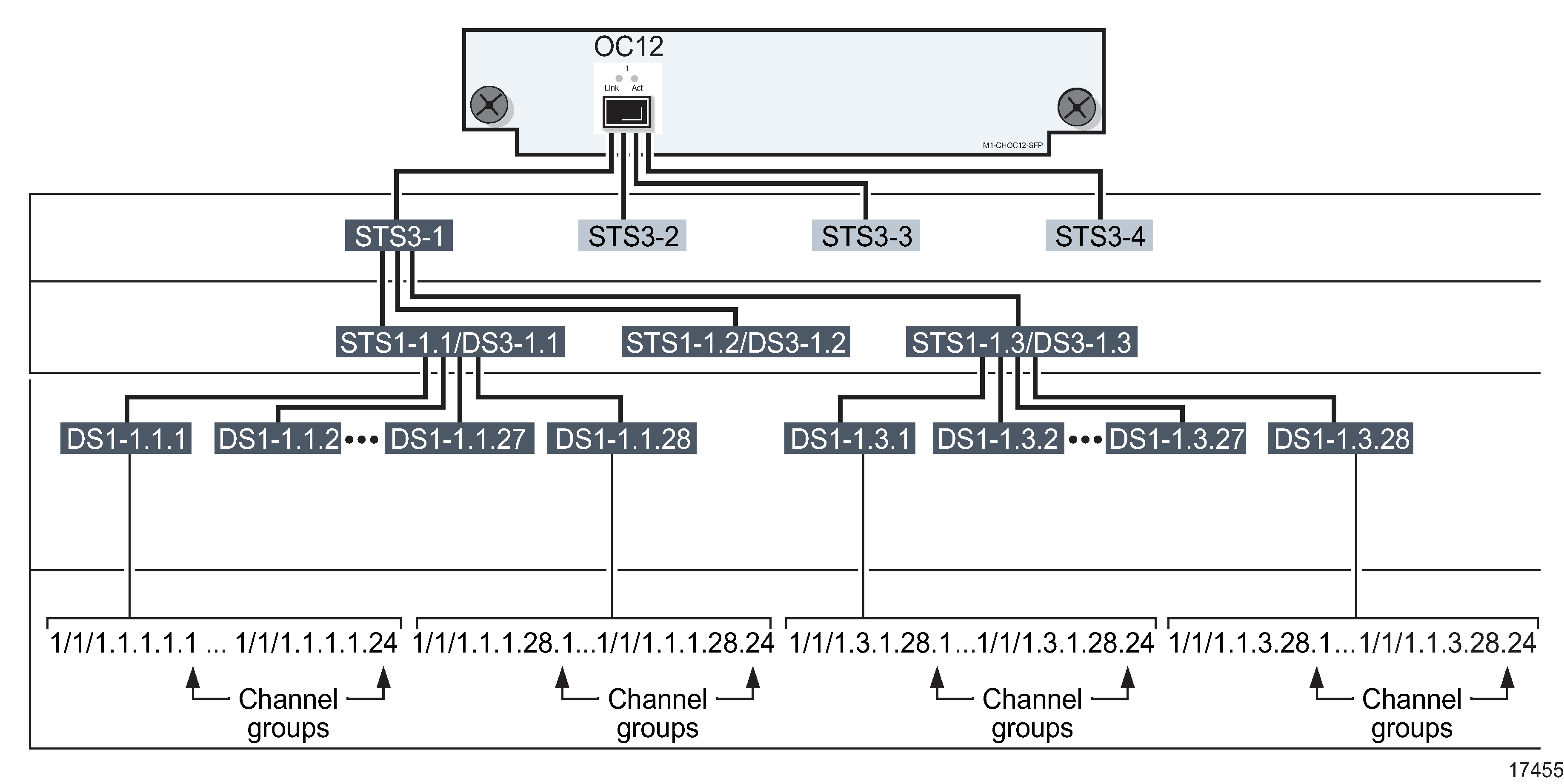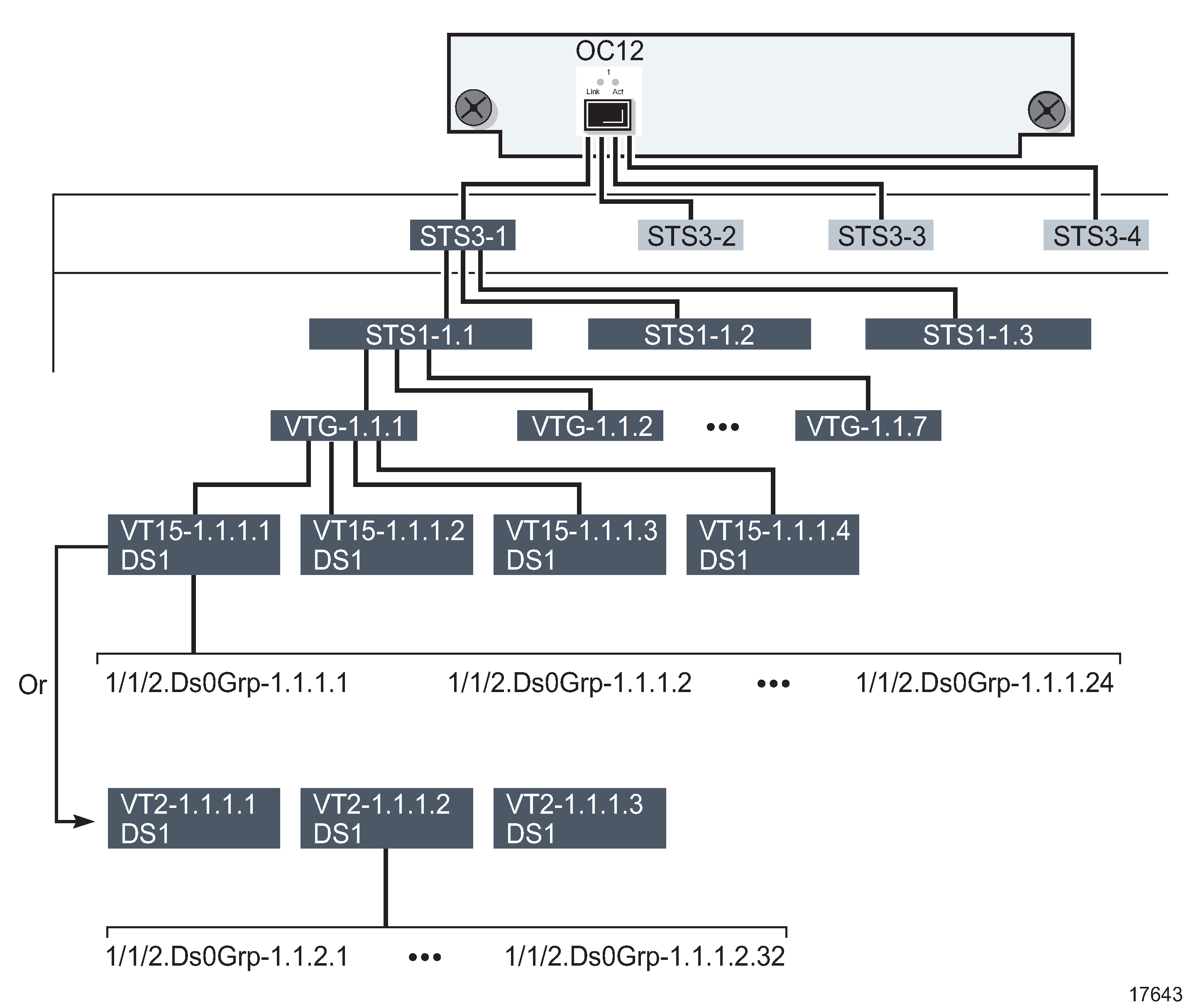Overview
SONET sub-channel applications
SONET sub-channel applications allow you to create multiple STS-1 channels on deep channelized OC-12 and OC-3 ports, and to configure multiple DS0 connection termination points.
An STS-1 sub-channel is configured, or channelized, to carry one of the following payload types:
Because of the differences between SONET and SDH in multiplexing and mapping of tributary payloads into higher digital levels, some building blocks of SDH have no SONET equivalent and therefore the containment hierarchy and terminology for SDH is different from SONET. See Comparison of SONET and SDH hierarchies and SDH AU-4 and AU-3 sub-channel applications in this section.
SONET DS3 payload
The following example, illustrated in Figure 16-5, Channelized 1 × OC-12 port structure using STS-1/DS3 sub-channels , shows the channelization sequence for a DS3 payload on a 1 × OC12 Deep Channel card.
-
One OC-12 port is created when you create a channelized 1 × OC12 Deep Channel card.
-
This port can be channelized into 12 SONET STS-1 sub-channels from the four STS-3s available on the port.
-
You can then configure each of these STS-1s to carry a DS3 frame
-
Each DS3 frame can be channelized into 28 independent DS1 data channels or 21 independent E1 data channels. Each channel must be created one at a time.
Figure 16-5: Channelized 1 × OC-12 port structure using STS-1/DS3 sub-channels

SONET VT1.5 and VT2 payloads
The following example, illustrated in Figure 16-6, Channelized 4 × OC-3 port structure using VT sub-channels , shows the channelization sequence for a VT1.5 or VT2 payload on a 1 × OC12 Deep Channel card.
-
One OC-12 port is created when you create a channelized 1 × OC12 Deep Channel card.
-
This port can be channelized into 12 SONET STS-1 sub-channels from the four STS-3s available on the port.
-
You can then configure each of these STS-1s to be channelized to carry up to 28 DS1. For SONET sub-channel configuration you must select payload type VT1.5 or VT2. When you choose VT1.5 payload type, seven VTG are implicitly created.
-
Each VTG is channelized into four independent VT1.5 channels or three VT2 channels, each of which can carry an independent DS1 data channel. Each channel must be created one at a time.
-
Each VT1.5 DS1 channel can be configured to handle up to 24 DS0 groups. Each VT2 DS1 channel can be configured to handle up to 32 DS0 groups. To use a DS1, you must create at least one DS0 group for the DS1 or E1.
Figure 16-6: Channelized 4 × OC-3 port structure using VT sub-channels
